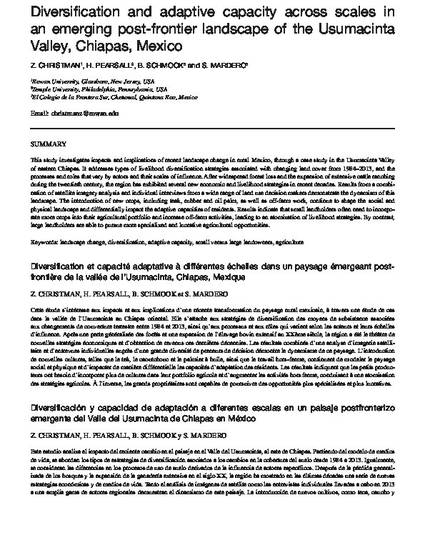
This study investigates impacts and implications of recent landscape change in rural Mexico, through a case study in the Usumacinta Valley of eastern Chiapas. It addresses types of livelihood diversification strategies associated with changing land cover from 1984–2013, and the processes and roles that vary by actors and their scales of influence. After widespread forest loss and the expansion of extensive cattle ranching during the twentieth century, the region has exhibited several new economic and livelihood strategies in recent decades. Results from a combination of satellite imagery analysis and individual interviews from a wide range of land use decision makers demonstrate the dynamism of this landscape. The introduction of new crops, including teak, rubber and oil palm, as well as off-farm work, continue to shape the social and physical landscape and differentially impact the adaptive capacities of residents. Results indicate that small landholders often need to incorporate more crops into their agricultural portfolio and increase off-farm activities, leading to an atomization of livelihood strategies. By contrast, large landholders are able to pursue more specialized and lucrative agricultural opportunities.

International Forestry Review is an Open Access journal.